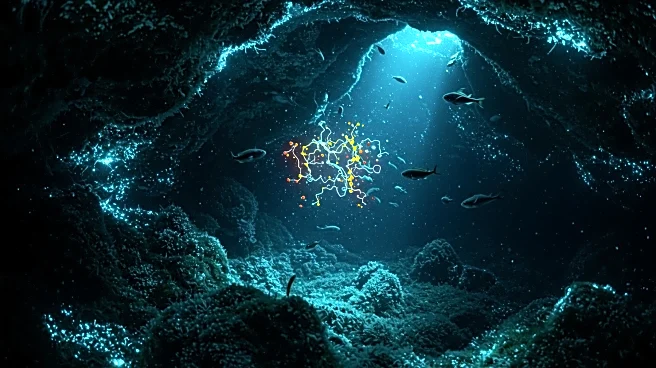Rapid Read • 7 min read
A study published in Nature investigates the conservation of dark CPD photolyase function in blind cavefish, specifically focusing on the Somalian cavefish, P. andruzzii. The research reveals that while the 6-4phr gene has multiple loss-of-function mutations, the CPDphr gene remains highly conserved. This suggests a potential benefit of retaining CPDphr function in environments lacking visible or UV light. The study also examines the role of CPDphr in DNA repair under oxidative stress, using medaka fish as a model. Loss of CPDphr function in medaka results in increased DNA damage and cell mortality upon oxidative stress, highlighting its importance in DNA repair.
AD
The findings are significant for understanding DNA repair mechanisms in organisms living in dark environments. The conservation of CPDphr function in cavefish suggests evolutionary adaptations to cope with oxidative stress, which is prevalent in subterranean habitats. This research contributes to the broader understanding of how organisms have evolved to survive in extreme conditions, potentially informing studies on genetic resilience and adaptation. Additionally, the study's insights into DNA repair mechanisms could have implications for medical research, particularly in developing strategies to mitigate oxidative stress-related damage in human cells.
Further research may explore the potential applications of CPDphr function in medical and biotechnological fields. The study opens avenues for investigating the genetic basis of adaptation to dark environments and the role of photolyase genes in other species. Researchers may also focus on the molecular mechanisms underlying CPDphr-mediated DNA repair and its potential use in enhancing cellular resilience to oxidative stress.
The study highlights the intricate relationship between environmental conditions and genetic adaptations. It underscores the importance of understanding evolutionary processes that enable organisms to thrive in challenging habitats. The findings may inspire future research on the genetic basis of adaptation and resilience, with potential applications in conservation biology and biotechnology.
AD
More Stories You Might Enjoy










